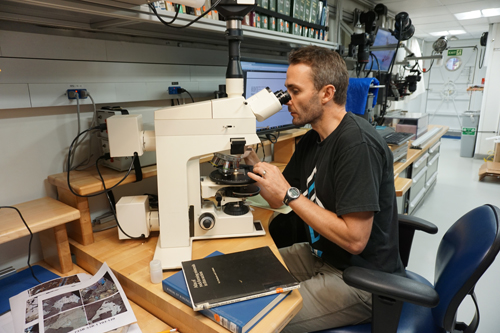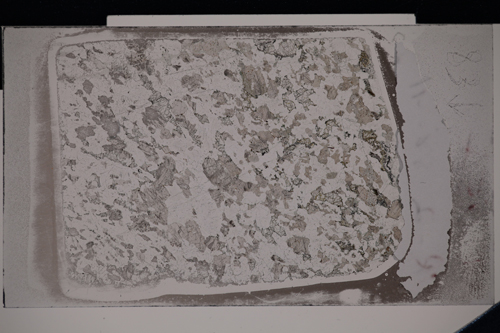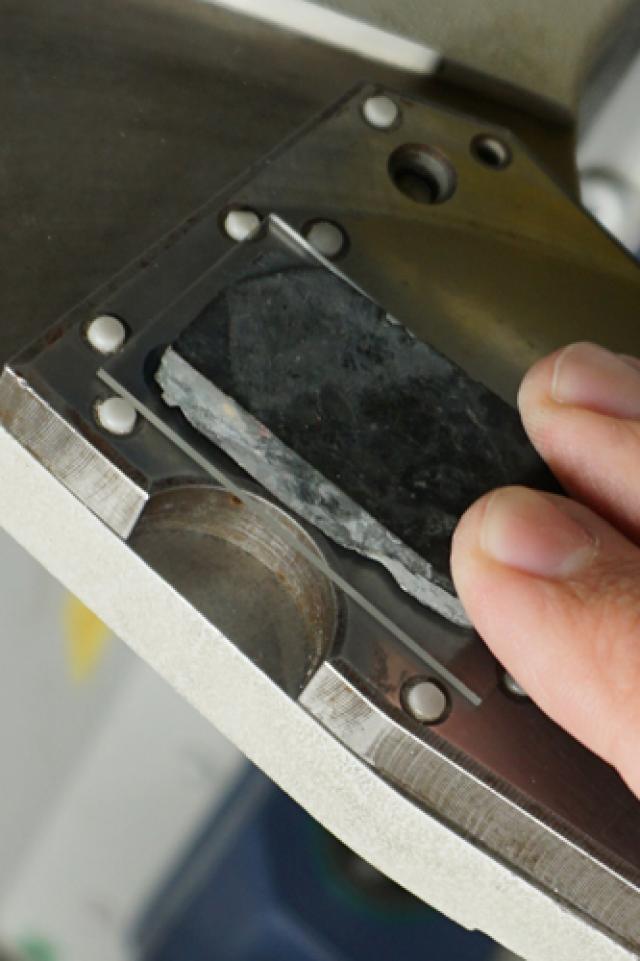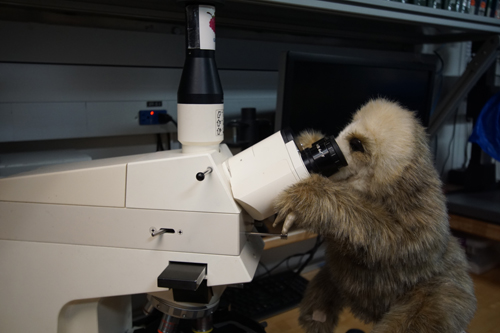
Thin-Sections Part 1: What in the world are they?
If you take the stairs up to the core lab and keep taking a left through the lab, you will come across a row of microscopes displaying some beautiful images.

Marl Kendrick examines thin-sections in the Core Lab.
When one thinks of a microscope you don’t generally think of rocks and minerals. Images of cells pop into my mind, but aboard the JOIDES Resolution we are all about rocks and minerals.
Geologists make what is called a thin-section to help identify minerals in rock. It can also tell us the history of the formation of rock. A thin-section is basically a sliver cut from rock that is ground so smooth it is almost completely transparent.

So how are thin sections made?
First a chunk of rock, or billet, about the size of a domino, is cut from the core.

One face is ground flat and smoothed with a grinding or polishing wheel. Then it is glued with epoxy on to a frosted glass slide to provide for better bonding. It is pressed on to the slide for about an hour. The bulk of the billet is then cut off. The slide is then placed on a jig and ground down to about 35 to 40µm. The final step is polishing which gets it down to a very smooth 30µm, which is about the thickness of a human hair. The whole process takes about 3-4 hours.

In part 2 we will see how placing the slide between two polarizing filters can help us determine what minerals are present in the rock!
